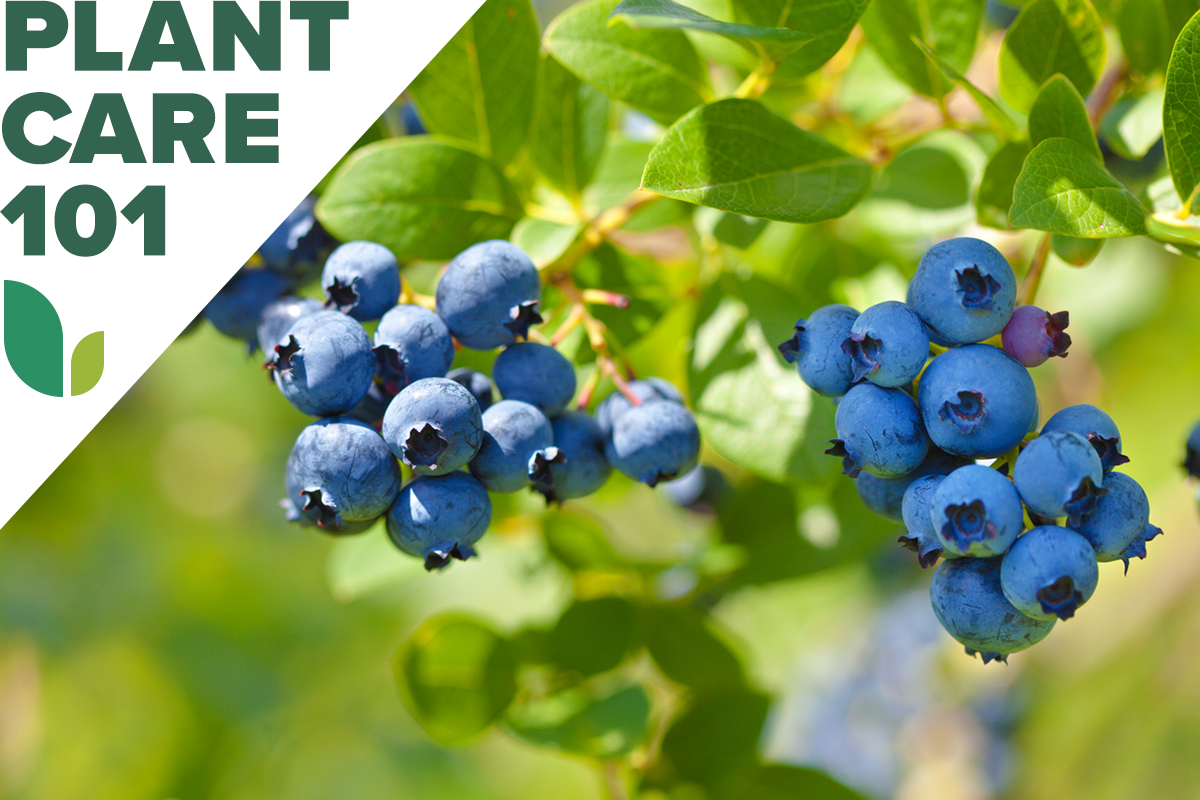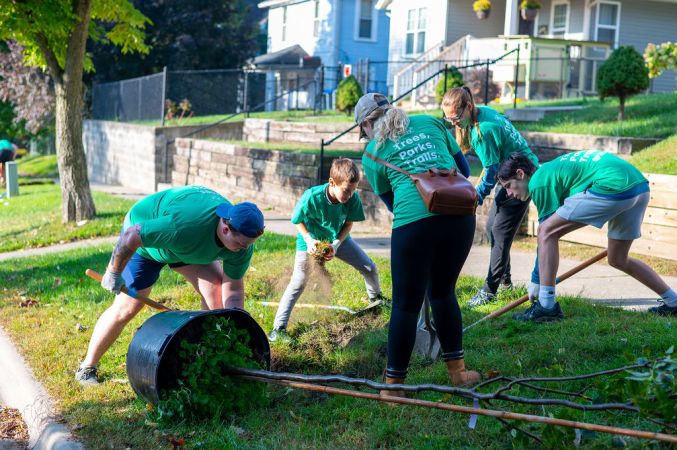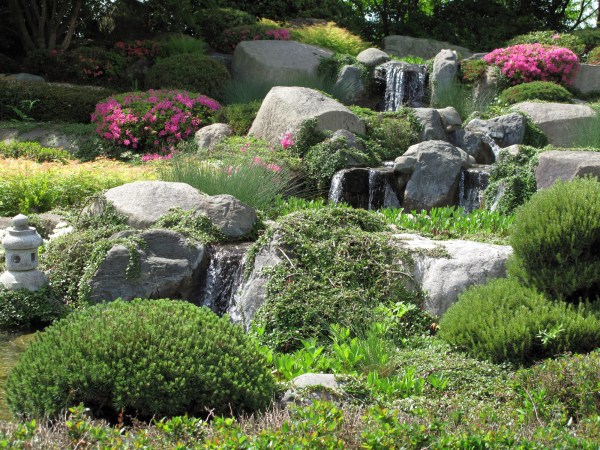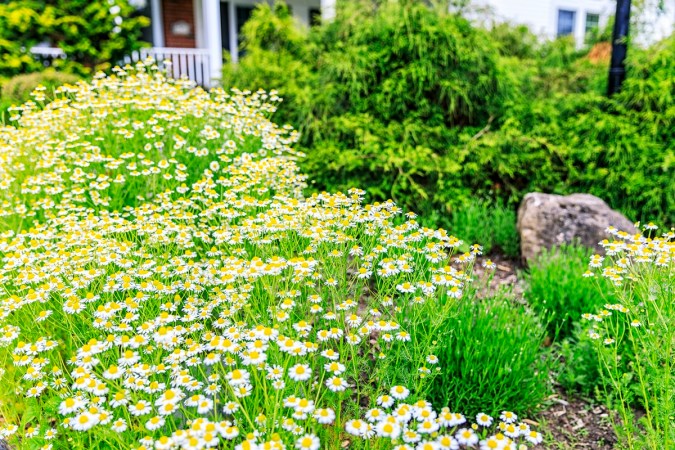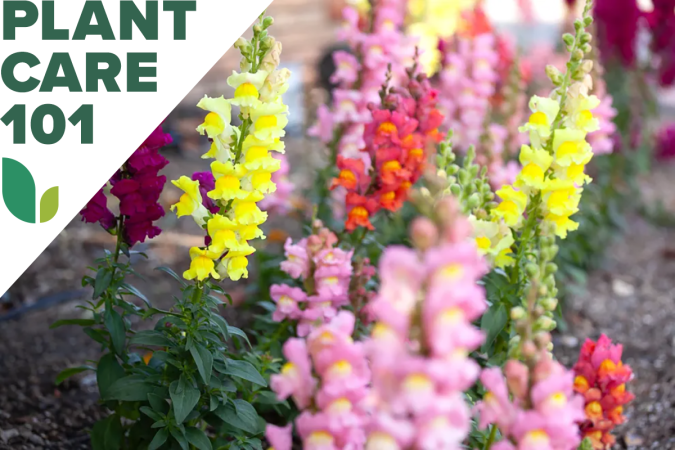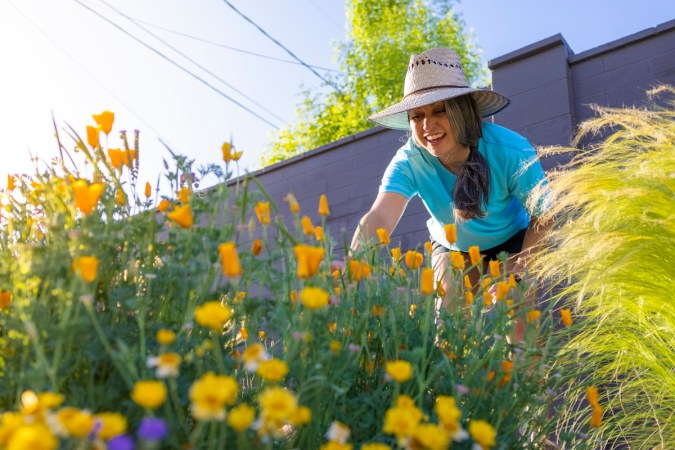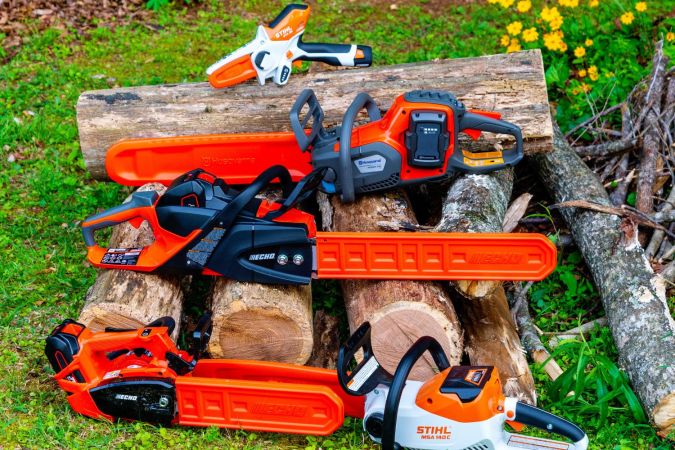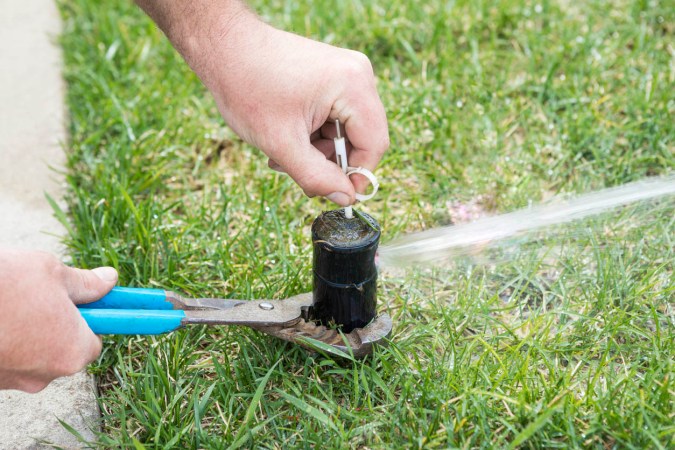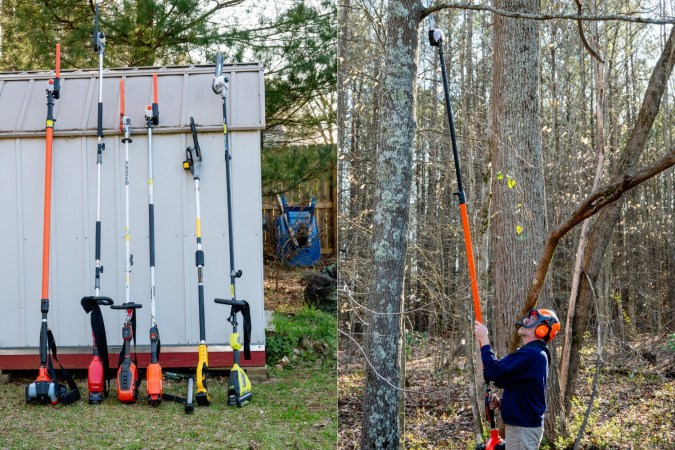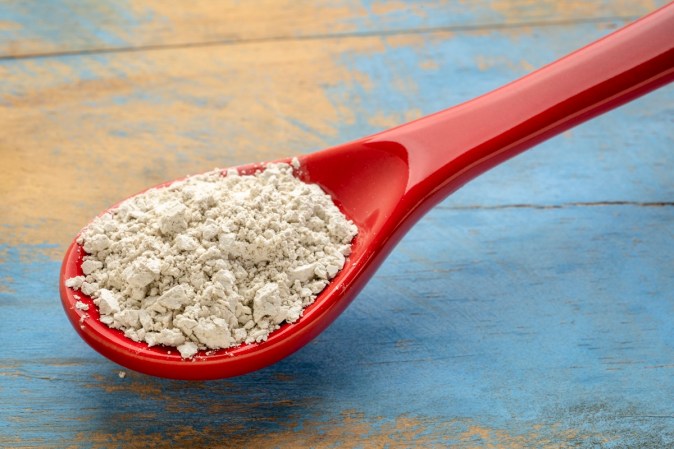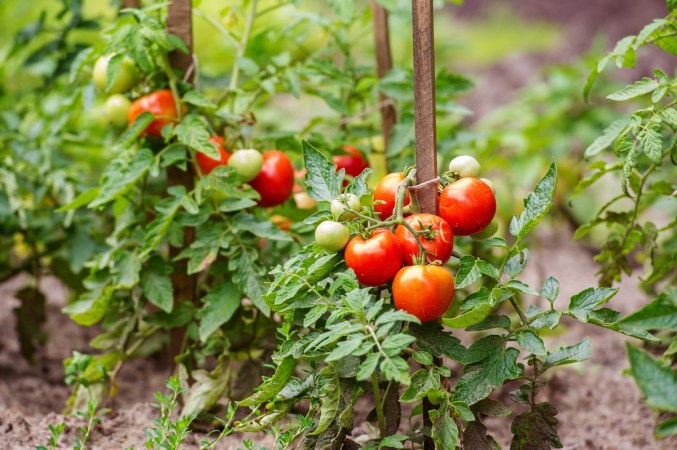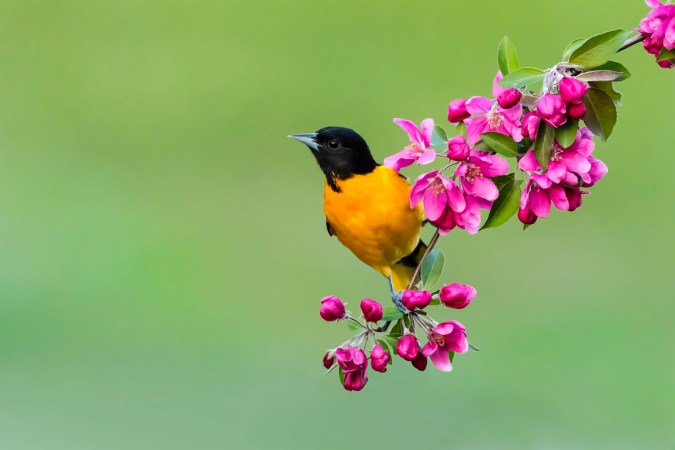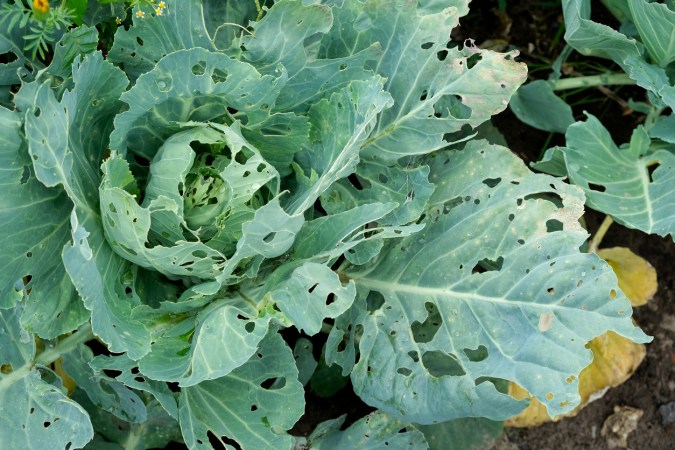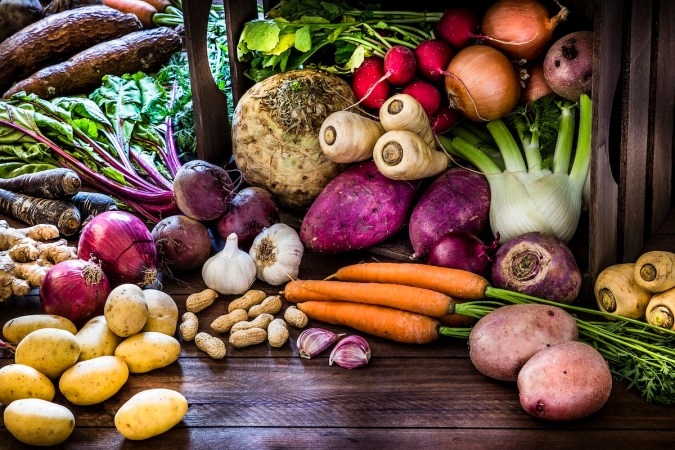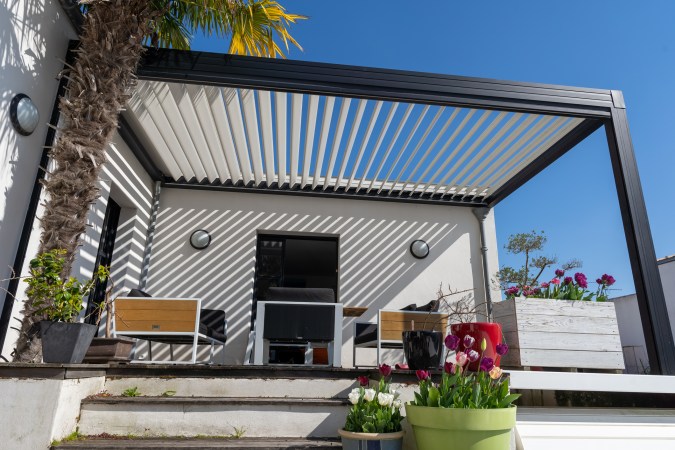We may earn revenue from the products available on this page and participate in affiliate programs. Learn More ›
Packed full of disease-fighting antioxidants and lots of vitamin C, blueberries are considered a superfood. In the garden, blueberries require patience and attention, but they will quickly become a gardener (and pollinator) favorite. When it comes to learning how to grow blueberries, all it takes is a little knowledge—and time—to have an abundant blueberry crop ripe for the picking.
Growing Blueberries at a Glance
Common Name: Blueberry
Scientific Name: Vaccinium spp.
Hardiness Zone: 3 to 10
Soil: pH between 4 and 5.5
Light: Full sun
Water: Regular
Food: Acidic fertilizer
Propagation: Dormant cuttings
Safety: Edible
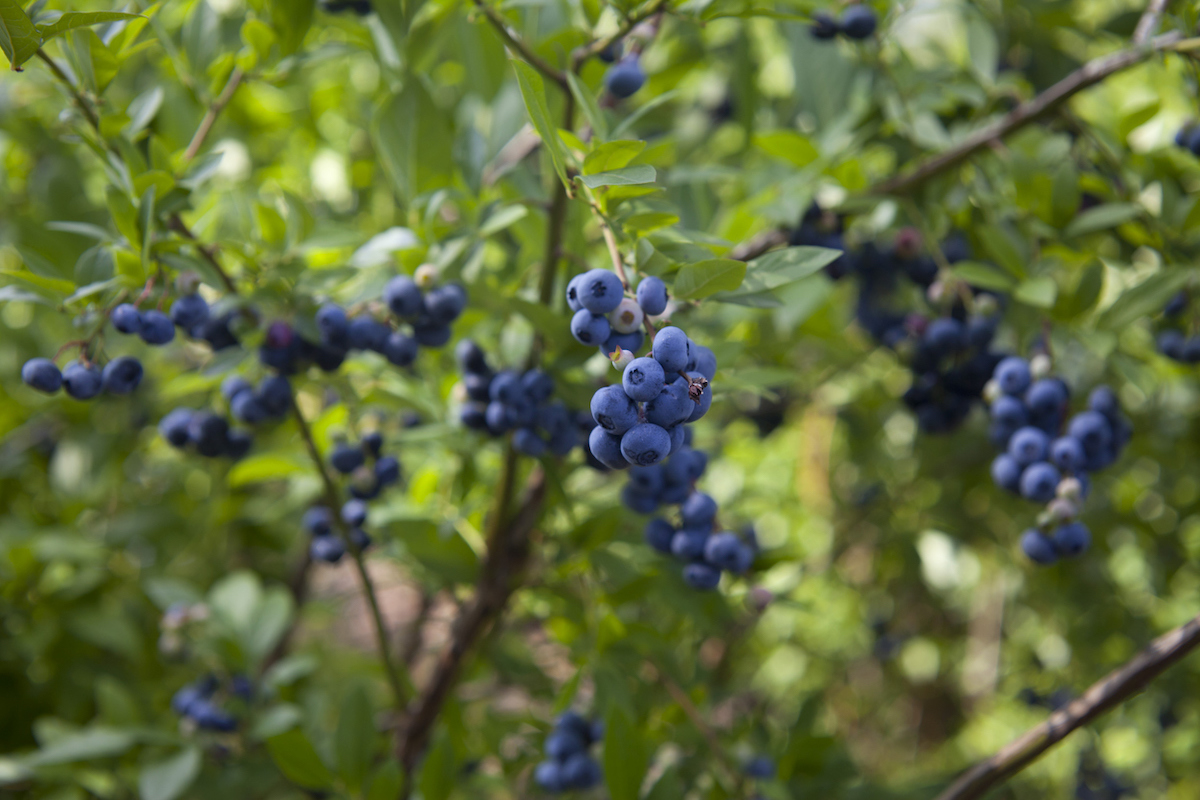
Blueberry Characteristics
Blueberries are a time investment. They are slow growers, taking around 10 years to reach mature size (up to 12 feet tall, depending on the variety), and they won’t produce significant harvests for 2 to 3 years.
But for the gardener who gives blueberries the time and space to grow, the reward is plentiful. They are attractive bushes, with leaves that often turn red in the fall, making them a beautiful addition to the landscape.
Recommended Blueberry Varieties
Blueberries are native to much of North America, and there are two main types of blueberry bushes: highbush (Vaccinium corymbosum) and lowbush (Vaccinium angustifolium). The primary difference in both of these is growth habits. Most lowbush blueberries grow to a height of around 2 feet, whereas highbush blueberries can grow anywhere from 6 to 12 feet tall. There are also hybrids of both highbush and lowbush.
- Bluecrop is a highbush blueberry variety that grows well in Zones 4 to 7. It produces large fruit mid-season and grows 4 to 6 feet tall.
- Jubilee produces fruit early to mid-season, is suitable for Zones 5 to 9, and reaches a height of 4 to 6 feet.
- Dwarf Tophat grows just 18 inches tall, is good for Zones 3 to 7, and is ideal for containers.
- Peach Sorbet is a compact blueberry that grows to about 2 feet tall. It does well in containers in Zones 5 to 10.
- Jersey is a highbush that grows well in Zones 5 to 8. It ripens in late July and grows 6 to 8 feet tall.
- Chippewa is a half-high bush that does well in Zones 3 to 7. It produces fruit mid-season and grows to about 4 feet high.
- Biloxi is a southern highbush that grows best in Zones 6 to 9. It can reach 8 to 12 feet high and produces fruit in late summer.
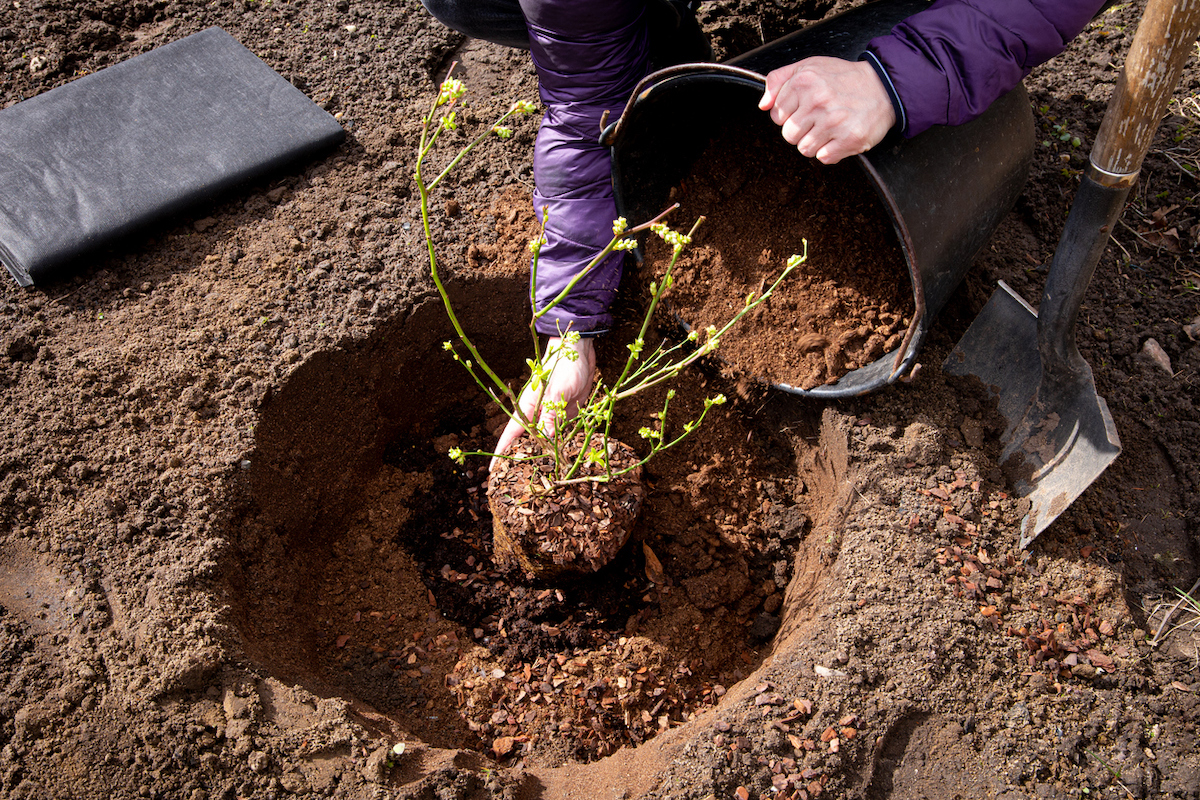
Planting Blueberries
The secret to growing blueberries is using the right soil. Unlike many other plants in the garden that thrive on a soil pH between 6.0 and 7, blueberries require their soil to be much more acidic, typically in the range of 4.0 to 5.5. Chances are, unless it’s in the middle of a pine forest, the soil will require amendment and fertilization to maintain the right pH.
When is the best time to plant blueberries?
As when planting perennial shrubs, the best time to plant blueberries is either in the late fall before the first frost or in early spring after any danger of freezing has passed. Depending on the climate zone, this can be anywhere between late September and mid-October or between March to early May. Bare-root blueberries, which are dormant, are best planted in the fall.
Where can blueberries grow?
Blueberries thrive in rich, acidic soil in full sun, although they can tolerate partial sun. They can grow in a range of USDA Plant Hardiness Zones from 3 to 10. In general, lowbush blueberries tend to handle colder winters and can be grown in Zones 3 to 7. Highbush varieties can generally tolerate zones ranging from 4 to 10. Be sure to select a blueberry that is suitable for the climate. Since there are many varieties and hybrids, there is likely an ideal type of blueberry bush for most climates.
How do you plant blueberries?
- Dig a hole two to three times as wide and at least two times as deep as the container your blueberry plant comes in.
- Add enough planting mix to the hole to ensure the blueberry bush will be flush with the ground.
- Gently remove the blueberry from the container. Roll it on its side to loosen the soil and carefully dump it out, using your hand to help it along without damaging the roots.
- Place the blueberry plant in the center of the hole. Add more planting mix as needed and gently press the soil until the blueberry is firmly in place. Note that the planting mix can be mixed with the existing soil if the pH of the soil is 6 or lower. Otherwise, stick with the planting mix exclusively.
- Water the shrub.
- Add more soil as needed until the plant feels stable.
- Water again.
- Add a thick layer of wood mulch around the base of the shrub to help retain moisture and acidity. Wood bark or pine straw mulch is ideal. Reapply throughout the season as needed.
Can you grow blueberries in containers?
Like raspberries and blackberries, blueberries are among the berries that do well in containers.
“Many people don’t realize this, but blueberries can be grown in containers,” says Diane Kuthy, founder and leading garden expert at How to Grow Everything. “If your soil is too alkaline for blueberries or if you don’t have a yard that can fit blueberries, you can still grow blueberries in containers. In fact, there are specific varieties of blueberries that have been designed specifically to be grown in containers on patios and porches.”
Kuthy suggests using extra-large pots, such as whiskey barrels, and making sure to use planting mix with plenty of peat moss for drainage and acidity.
“Small lowbush varieties can be grown in smaller pots. The only real downside to growing blueberries in containers is that they are less cold hardy and more susceptible to winter damage. If your pots are small enough, consider bringing your blueberry plants indoors during the coldest parts of the winter.”
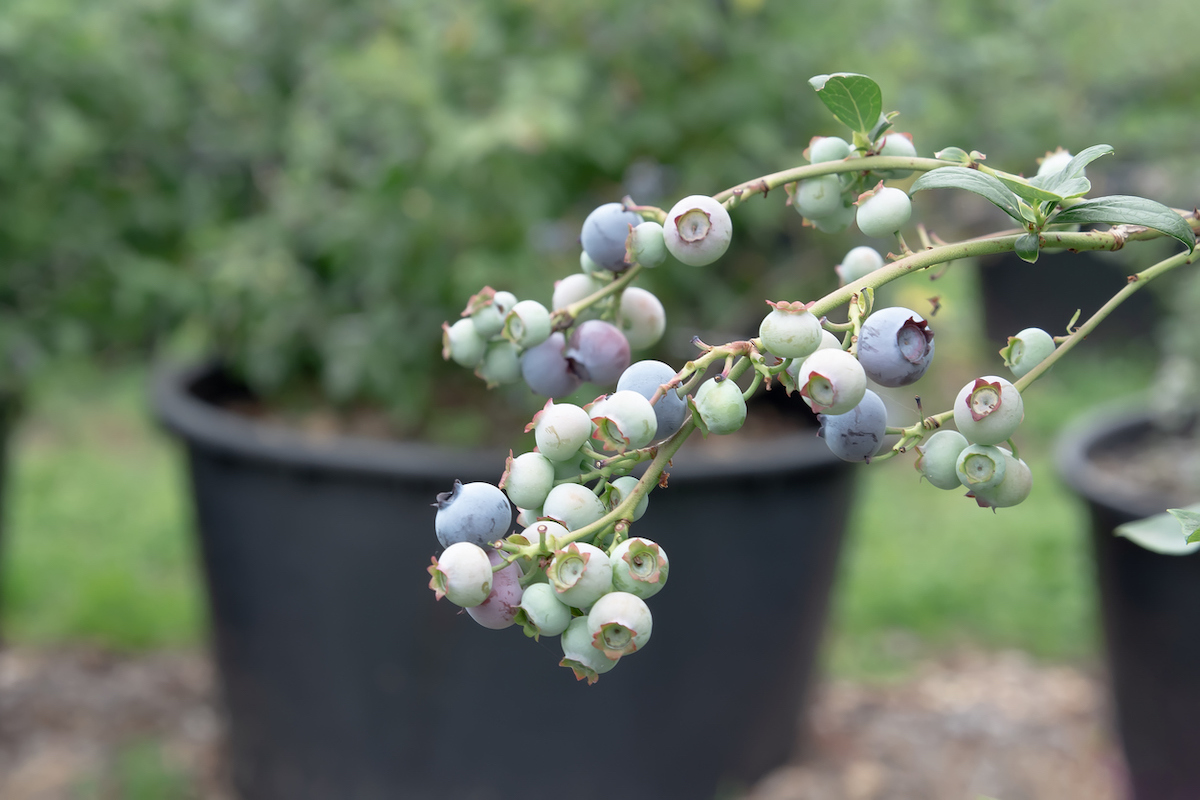
Watering Blueberry Plants
Blueberries have shallow roots, so it’s important to keep the soil near the surface moist. However, don’t overwater or allow them to sit in standing water. Water blueberry plants with about 1 inch of water per week, and more during extended periods of high heat. Mulching helps with water retention.
Fertilizing Blueberries
Choose an acidic fertilizer for blueberries that will help maintain the proper soil pH and provide blueberry bushes with the proper nutrients they need, including a good amount of nitrogen. If leaves are turning red or there is a lack of new growth, the soil pH is likely no longer in the optimum range for blueberry health. The best fertilizer for blueberries is generally one that can also be used on other acid-loving plants, such as azaleas and rhododendrons.
Fertilize blueberries during their blooming period (in the springtime) according to fertilizer directions. For newly planted blueberries, fertilize about 1 month after planting. For established plants, fertilize in early spring each year before growth. Many gardeners also fertilize again in the fall before the first frost.
Pollination
Blueberry plants are primarily pollinated by bees, so creating a pollinator garden is a huge boon to any gardener who is hoping for an abundant fruit crop. Many blueberries are self-pollinating, meaning they do not require more than one type of the same variety to produce fruit. However, planting more than one blueberry bush of any variety will increase pollination and the size of fruits.
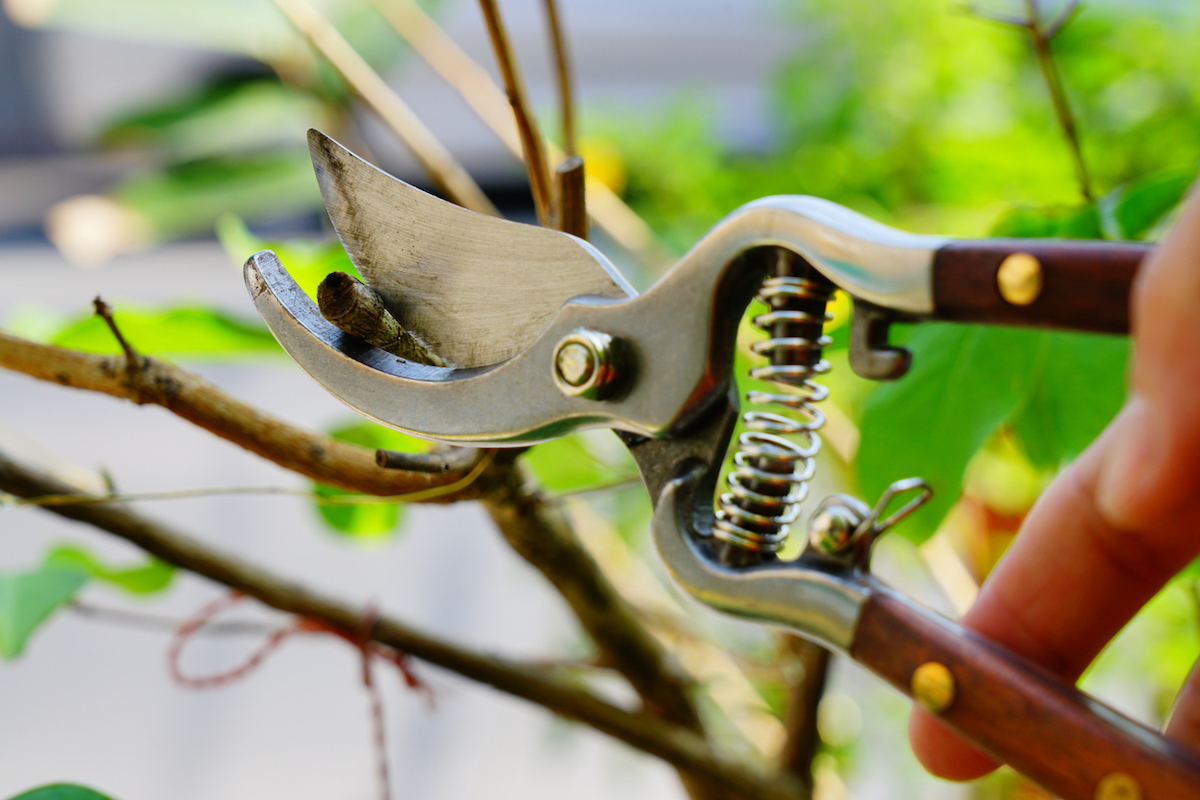
Pruning Blueberry Plants
Blueberry plants tend to shape themselves, so pruning is done primarily to encourage growth and fruit production only. In the first year, avoid pruning beyond removing broken or dead parts of the plant. Once the plant has been established in the years following, prune lightly in spring before new growth.
Blueberry plants will produce an abundance of fruit buds, but too many will result in small, undersized berries, so light pruning can help prevent this. Be sure to keep enough main stems to prevent overbearing.
Propagating Blueberries
Blueberries are propagated from either softwood or hardwood cuttings. These cuttings are taken from a healthy, mature mother plant. Softwood cuttings are taken in early spring; hardwood cuttings are taken during the dormant season.
Safety Considerations
Blueberries are nontoxic plants that produce edible fruit that is not a threat to animals. The wood of the blueberry is nontoxic, but it has been known to cause upset stomachs in dogs or cats if eaten in excess. The greatest safety consideration in blueberries relates to the application of pesticides on the plants and consumption of the fruit after pesticides have been applied.
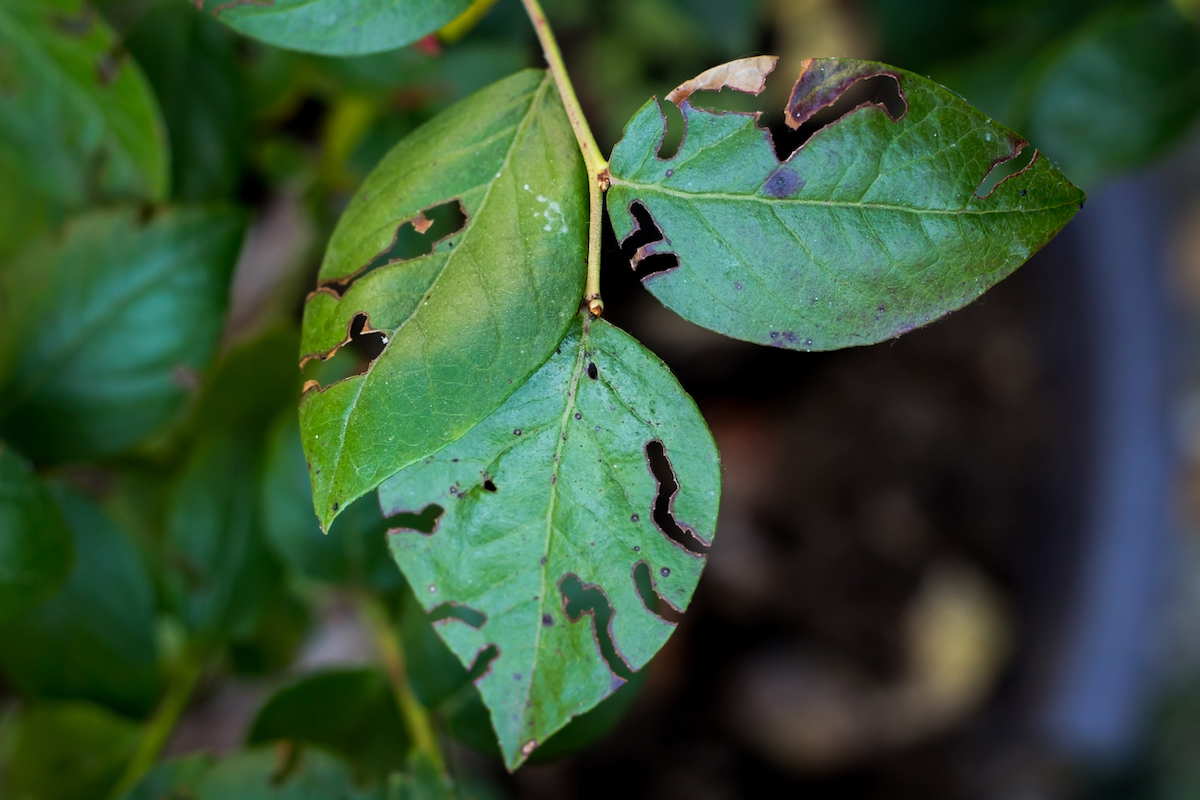
Potential Pests and Diseases
As North American natives, blueberries can be generally disease- and pest-resistant, assuming the right variety is chosen for the climate. Blueberries can fall victim to many of the common garden pests including aphids, maggots, leafhoppers, borers, and scale.
They are susceptible to several fungal diseases including mummy berry (caused by the fungal pathogen Monilinia vaccinii-corymbosi), which causes wilted leaves and shriveled fruit. Others include berry rot, Botrytis blight, and Phomopsis twig blight. In extreme cases, treatment may require the application of a fungicide, but these diseases in the home garden are often preventable if the plant is given adequate circulation and proper watering and fertilizing.
Harvesting Blueberries
Different varieties of blueberries can be harvested at different times of the year, and planting several types of blueberries can help ensure the harvest season lasts longer.
Generally speaking, blueberries are a summer crop. However, some southern varieties can be harvested as early as April or May.
When is the best time to harvest blueberries?
Early-season blueberries are harvested in May or June; mid-season berries are harvested in July and August; and late-season blueberries are harvested as late as September.
How do you harvest blueberries?
Once fruits begin to form, it may well be worth investing in blueberry netting to help keep the local bird population from eating all of the tasty berries. Harvest berries just before or just at ripening. Like tomatoes, blueberries will continue to ripen after being picked——just don’t pick them too green, as they need a decent blush of purple on them.
- Use your thumb and forefinger and simply pick the berry off the bush cleanly. If the berries don’t come off easily, they aren’t ripe enough to harvest.
- For larger crops, consider a blueberry picker to expedite the harvest.
How do you store blueberries?
Freshly picked blueberries should be stored in the refrigerator in a container that has air circulation or in a large bowl or container uncovered. Don’t seal blueberries in an airtight container because this will cause them to mold.
Blueberries are an excellent candidate for freezing. Simply wash them, allow them to dry, and then spread them out in a single layer on a plate or pan in the freezer until frozen, at least 2 hours. Once they have frozen through, place them in a sealed bag and store it in the freezer for up to 6 months.
Blueberries can also be canned or made into jams to extend the shelf life.
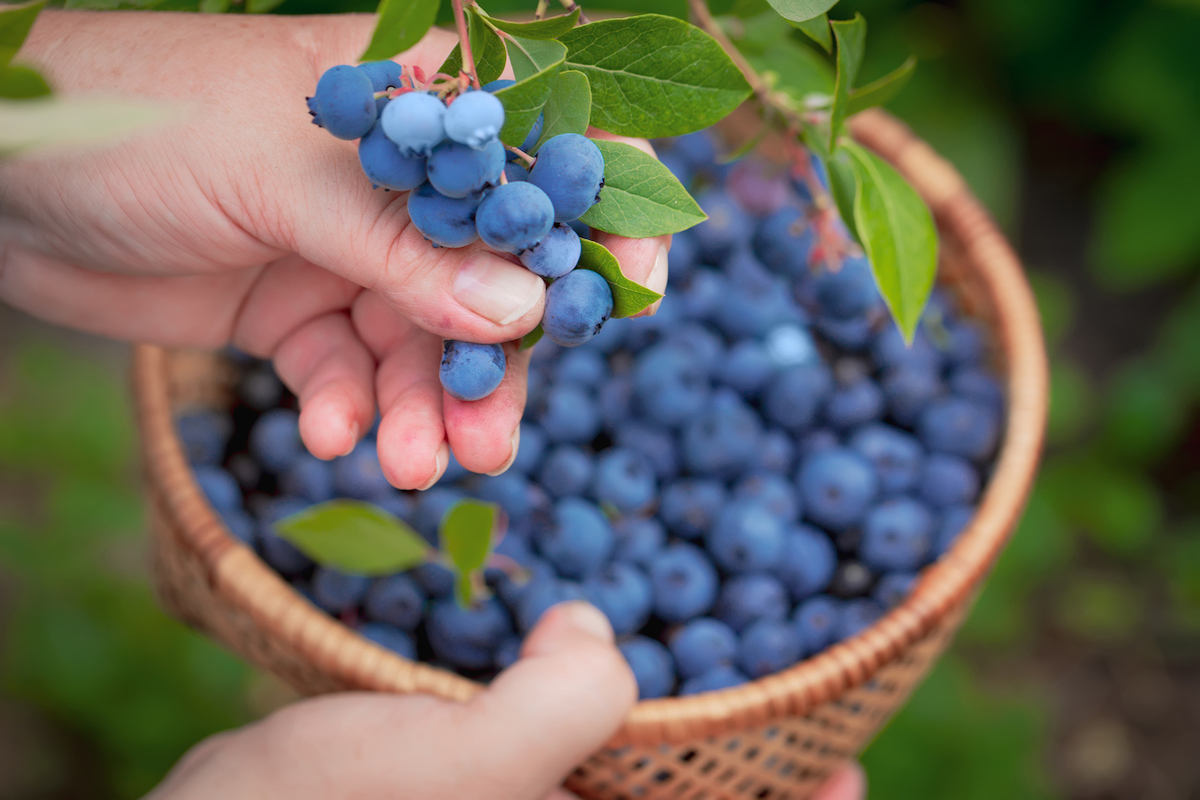
Preparing Blueberry Plants for Winter
Even blueberry varieties that are tolerant to extremely cold winters require some prep ahead of the winter season. Water and fertilize blueberries accordingly in the fall up until there’s danger of frost.
Before winter hits, apply a thick layer of mulch—as much as 6 inches. Use straw, sawdust, pine straw, wood mulch, or sawdust.
If blueberries have been grown in containers, extra measures should be taken to prepare them for winter, as blueberries in the ground have better insulation than those in containers. In cold climates, this may require bringing blueberry plants inside during the winter.
Looking for more edible plants? Check out our guides on growing elderberries, raspberries, and grapes.

